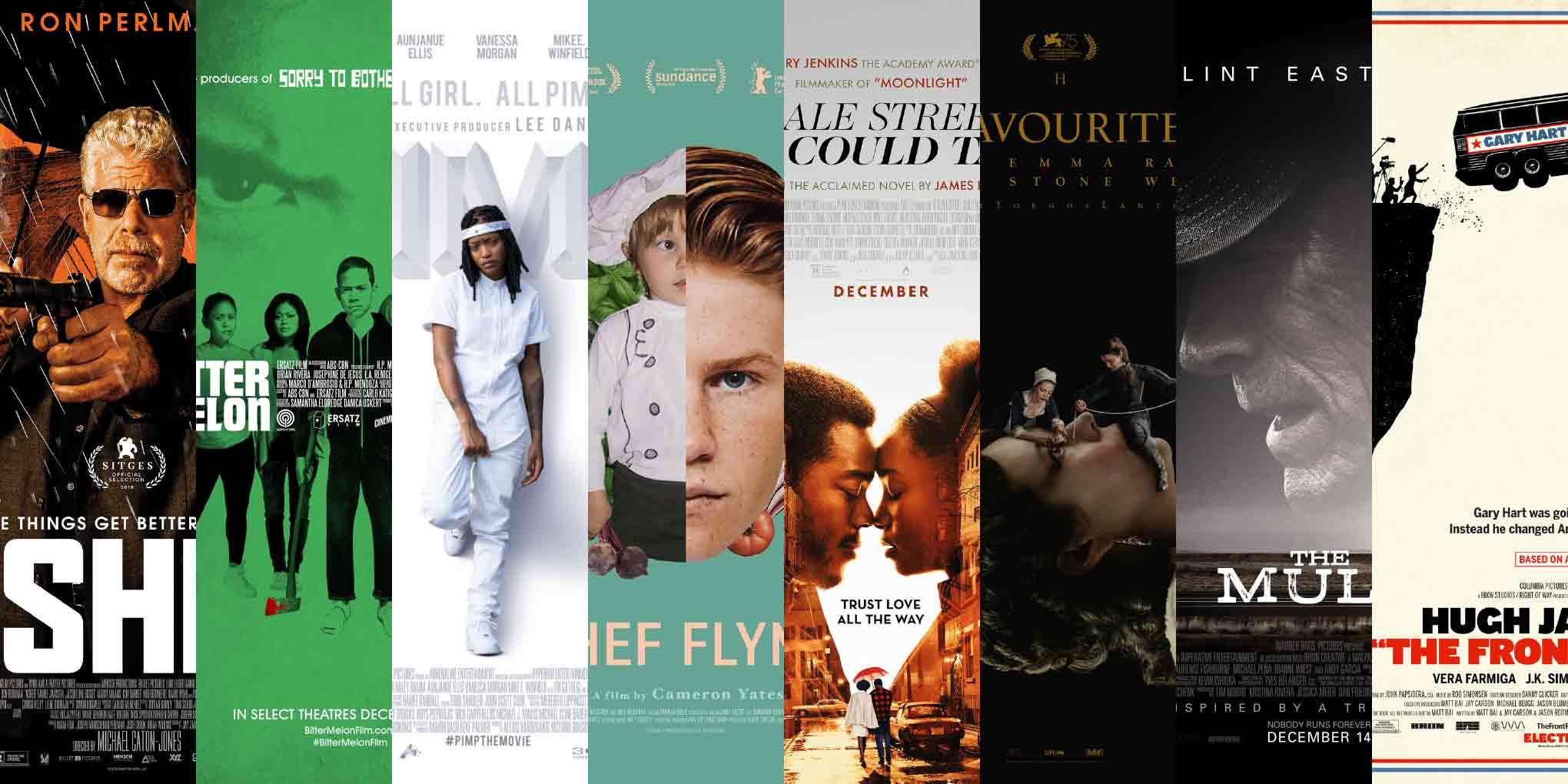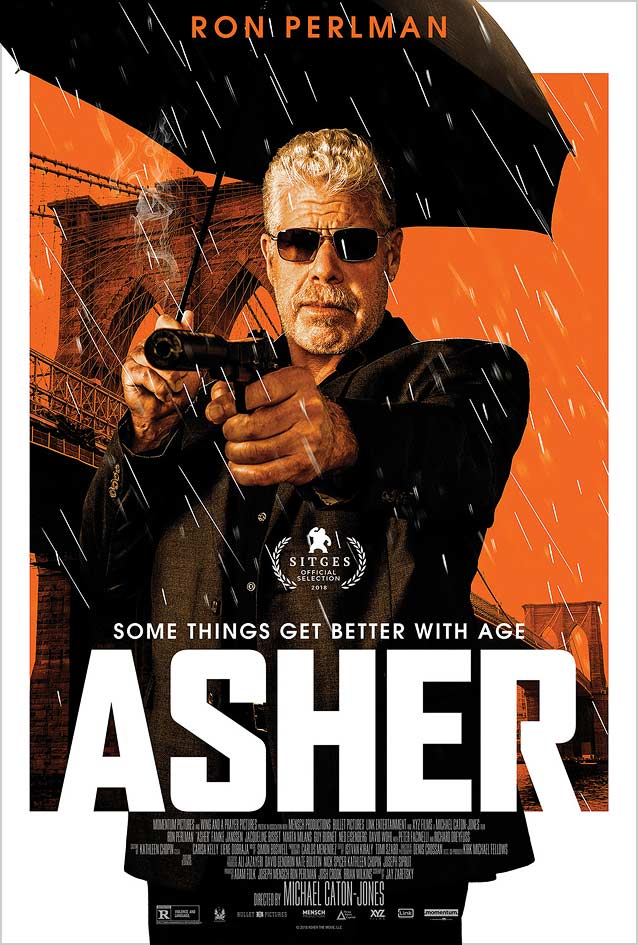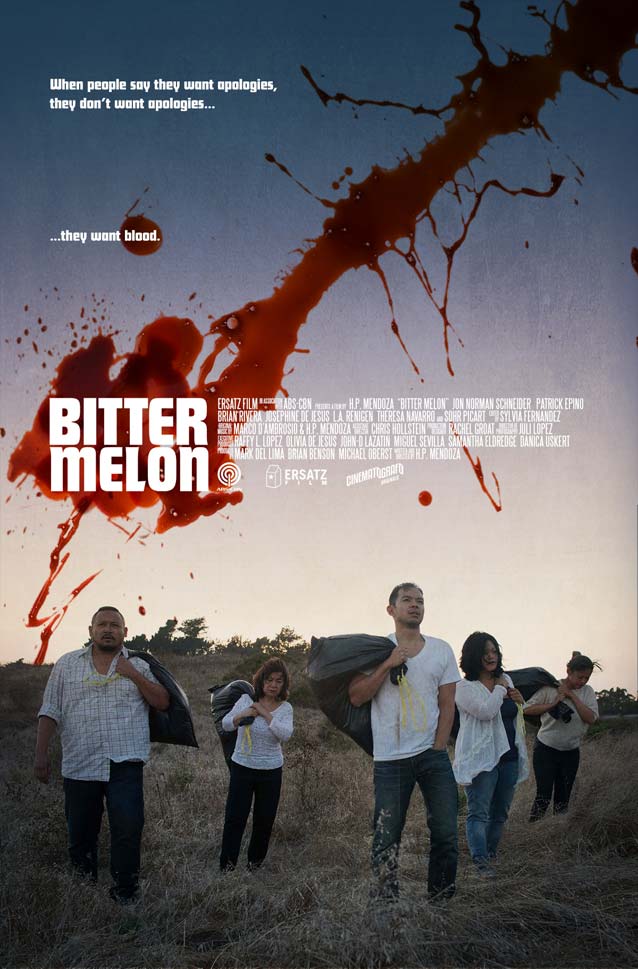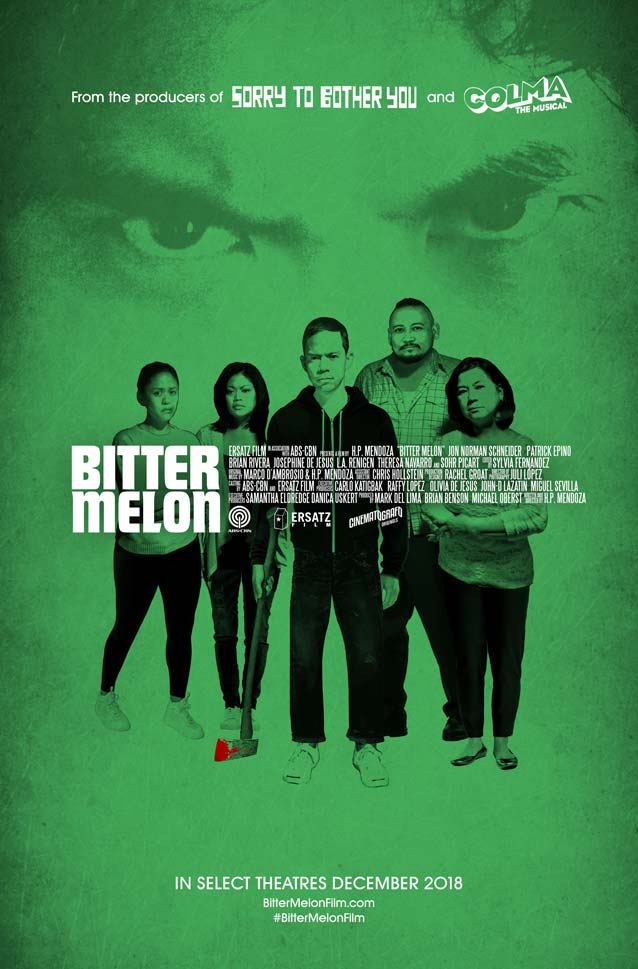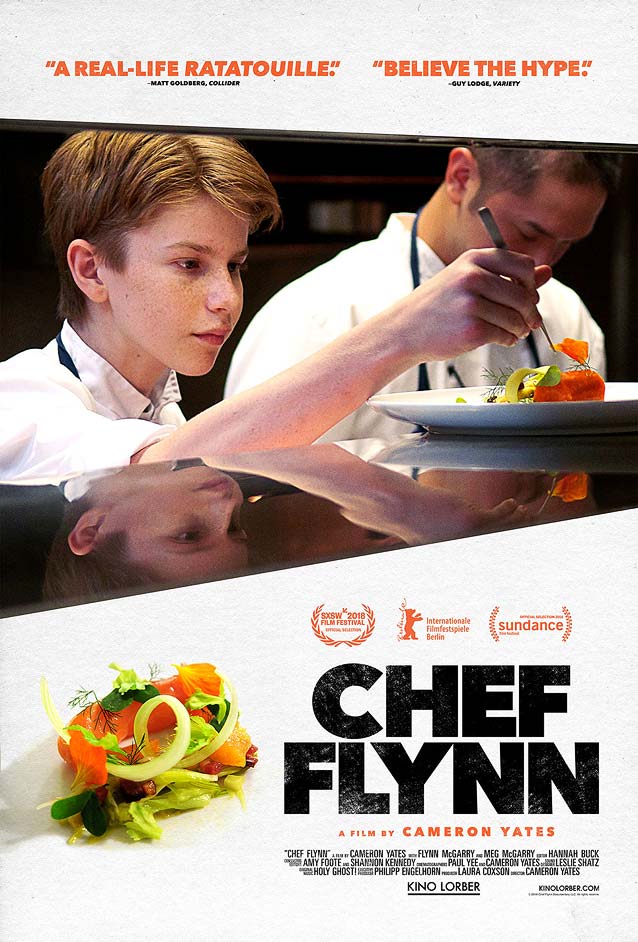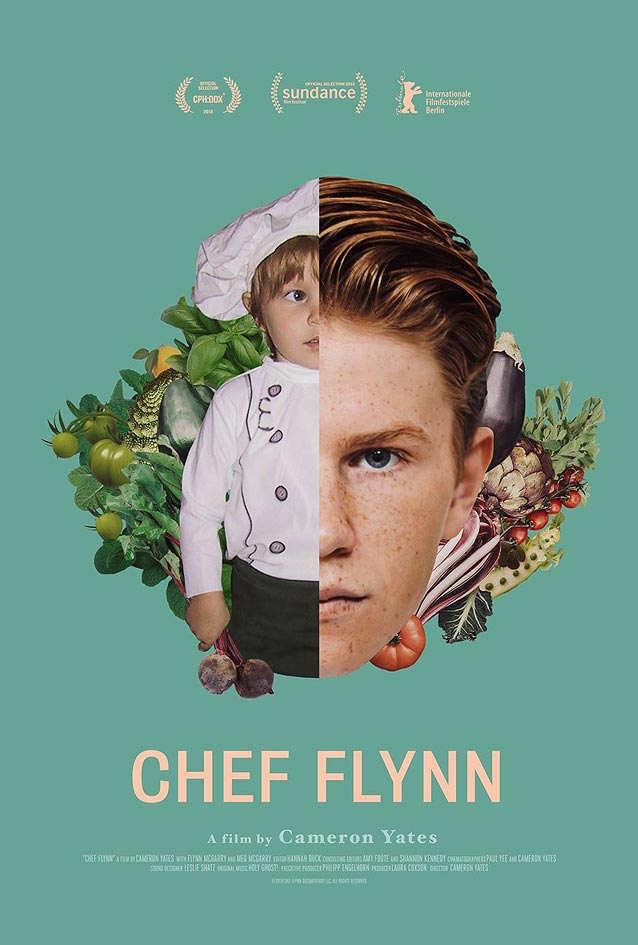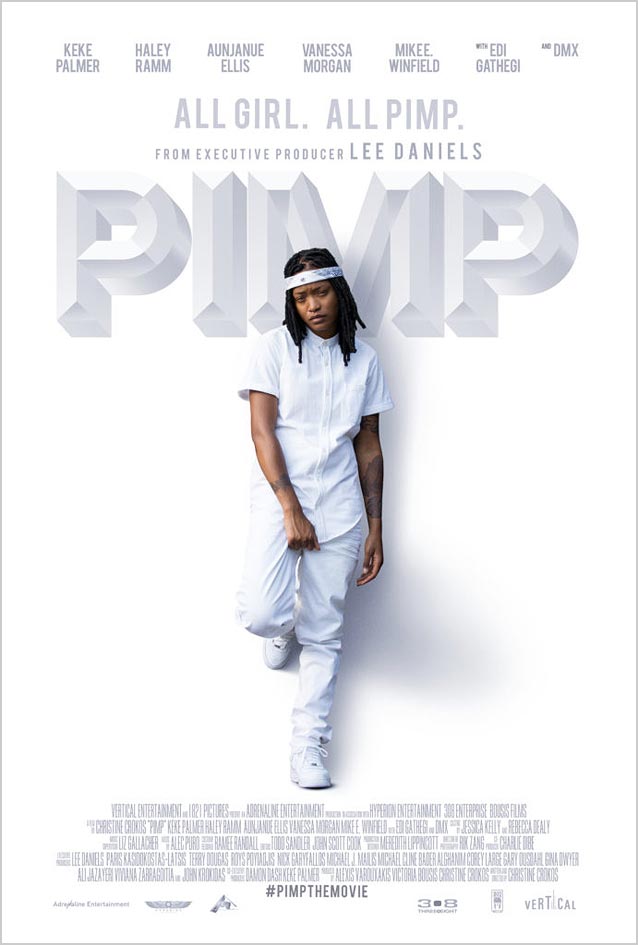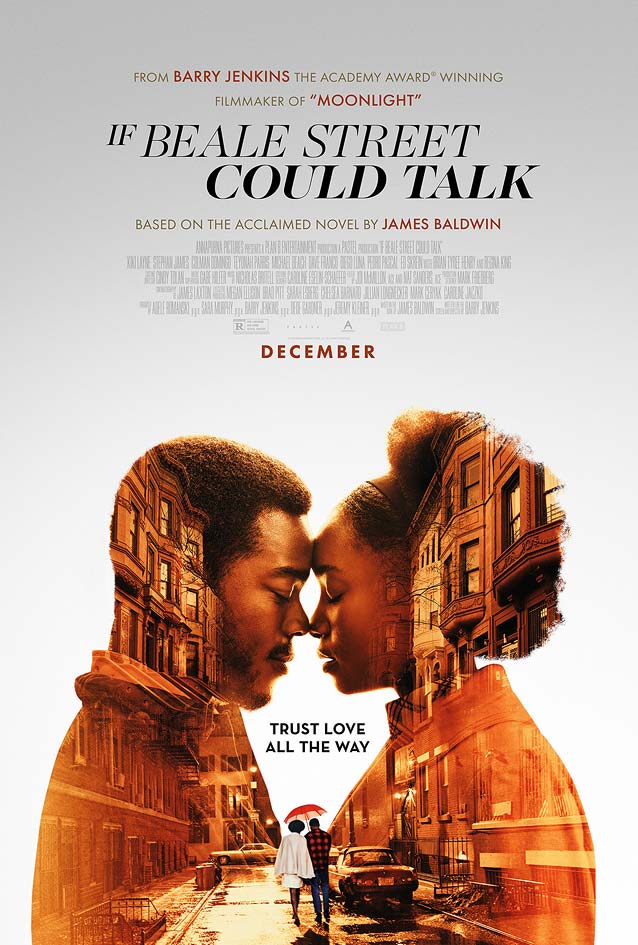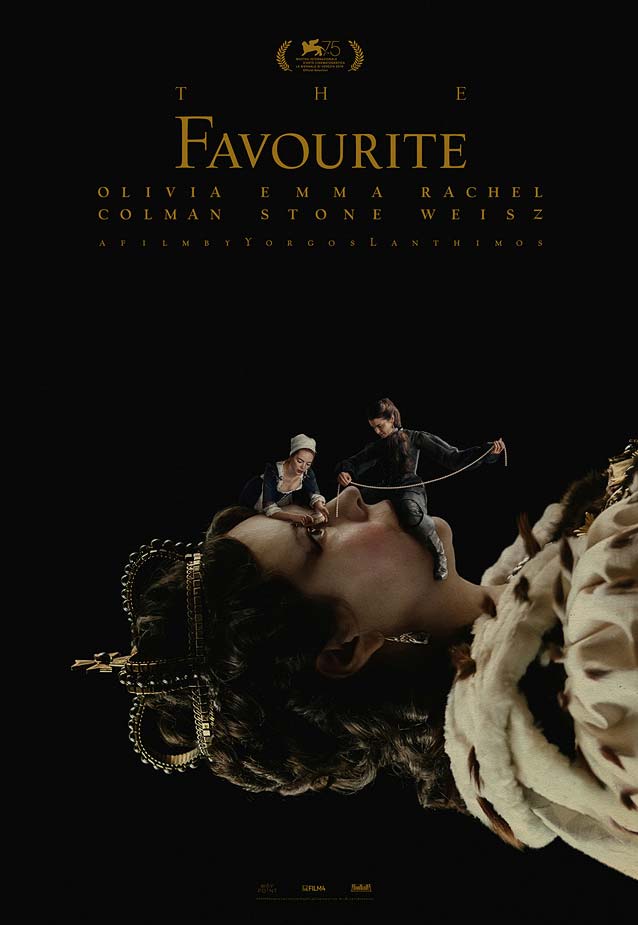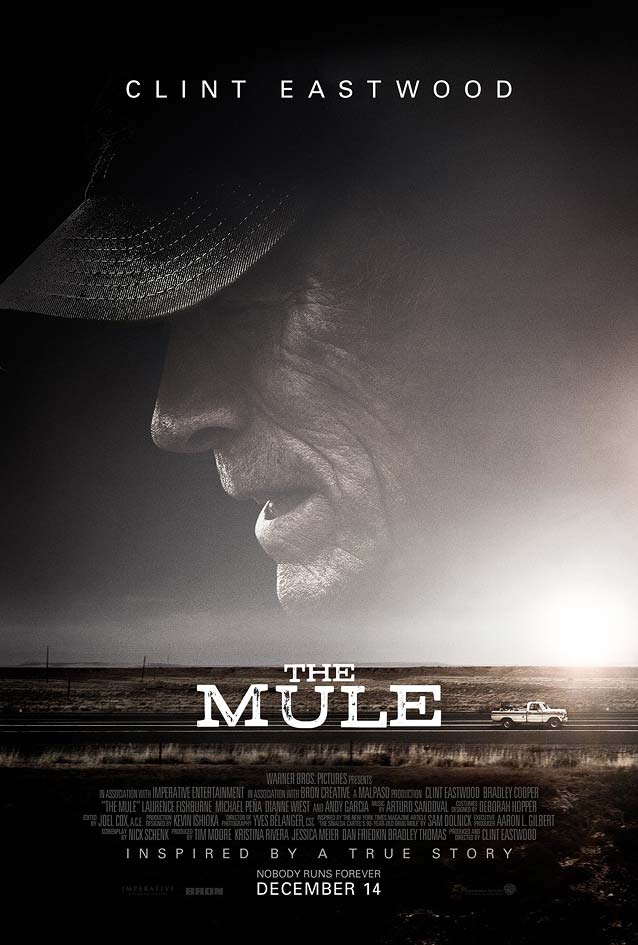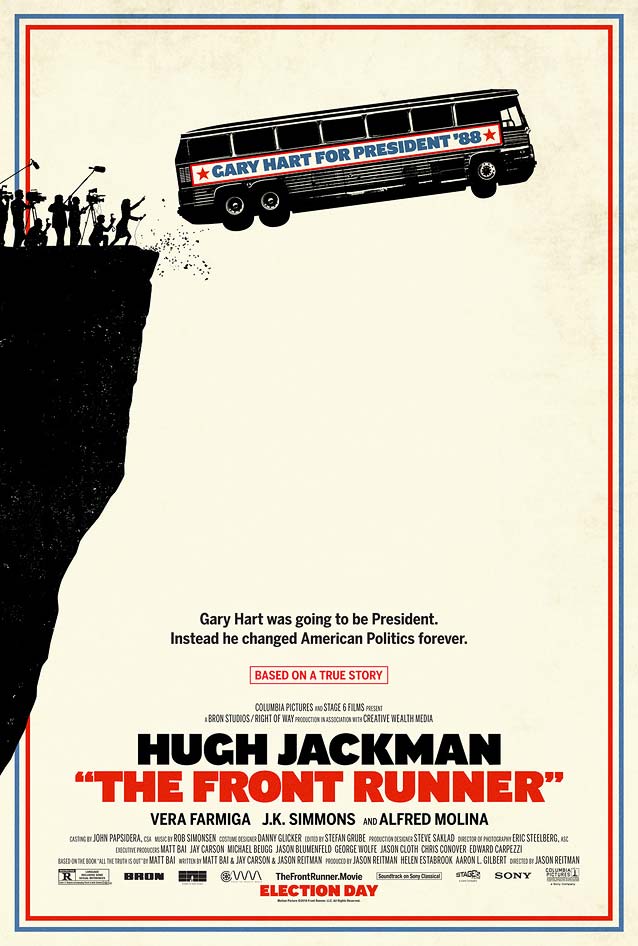Asher
© 2018 Momentum Pictures. Key art by Champ & Pepper, Inc.
Champ & Pepper pull off great synergy between image and type in their expertly executed one-sheet for Asher ,Agency FB Black letters resting on the bottom edge of the frame make it flow in and out of the image. Note how well the letterforms intersect with Perlman’s shape, and how the credits are neatly contained inside the part of his silhouette that falls below the title.
Bitter Melon
© 2018 Ersatz Film. Key art by H.P. Mendoza.
Bitter Melon H.P. Mendoza told me he designed the poster himself. “We’re officially an ultra-low-budget operation, so we all had to wear many hats,” he said. “As a filmmaker working with various design companies, I have a tertiary focus on graphic design, animation, and sound design, including music, so that makes me a self-trained designer, I guess.”
Mendoza quickly created a poster for the festival premiere, but “I wasn’t happy with how ‘movie’ it felt. Plus, the still with the streak of blood felt like a different movie to me. So I imagined who my main audience was, especially at our premiere at the Asian Film Festival , and I started playing with the Pavlovian response many Asian American filmgoers experience when they see the poster for Better Luck Tomorrow .”
© 2012 Ersatz Film. Key art by H.P. Mendoza.
“I also made the poster for my previous film, the horror thriller I Am A Ghost ,Neue Haas Grotesk . For Bitter Melon, I thought it would be nice to use a typeface that graced the covers of a lot of my favorite books: some Bradbury, some crime novels. I associate Steile Futura with dark literature.”
© 2018 Ersatz Film. Key art by H.P. Mendoza.
Bitter Melon ’s final theatrical one-sheet shows again how a “non-professional” designer intimately invested in a movie can produce a great poster for it. The high-contrast black-and-white family portrait overlaid on the green canvas, with the angry eyes of the abusive brother looming overhead, provides a perfect backdrop for the knocked-out type. The movie title is set solid next to the obligatory tiny text, the entire block of type emblazoned across the family members’ torsos. No need for big letters: its striking position guarantees the viewer can’t miss the title.
Steile Futura, also known as Topic, was modernized and expanded by Guy Jeffrey Nelson as Tasse , an expansive family of narrow sans serifs in four weights and five widths.
Chef Flynn
© 2018 Kino Lorber. Key art by Matt Frost.
Chef Flynn Matt Frost used the space between the kitchen line counter and the heating lamps as a natural framing device for showing the young chef in his element.
Avenir Next ’s heavy black letterforms nicely offset the fresh green and orange on the white canvas. If you like very bold geometric capitals, check out the sharp angles of BF Bonn and Telefon . The vertical cuts on the cap C of Upgrade , New Hero , and Dunbar Tall would make a tighter fit possible for “Chef”.
© 2018 Kino Lorber. Key art by Palaceworks, Inc.
Palaceworks created the surprising one-sheet for the documentary’s domestic release. In an email, Erik Buckham wrote that the client, director Cameron Yates, was excited about the unusual concept from the beginning. “We were keen to have the poster not be your standard ‘food doc’ style,” he said, “but rather focus on Flynn’s journey from youth to adulthood. I am a big believer that there should always be some tension in poster art that hints at a deeper emotional narrative. This can especially be challenging with documentary posters, as they often tend to be obvious and bland. In this case, Yates wanted to push the concept further, which is always a great thing to hear!”
Bureau Grot Book , set in all caps, underscores the inventive, detailed collage in understated apricot against the cadet-blue canvas. I hate to nitpick, but the LYN sequence could have been kerned a little tighter.
Pimp
© 2018 Vertical Entertainment. Key art by Statement Advertising.
Statement Advertising ’s key art for Pimp ,Bold Monday ’s layered type family Nitti Mostro offers a ready-made, out-of-the box solution for such typographic decorations: either combine the preassembled Nitti Mostro Chrome with the Shadow style, or layer Shadow, Solid, and Chrome Solo in different colors to create polychromatic text.
If Beale Street Could Talk
© 2018 Angel Films. Key art by Gravillis, Inc.
Once again, Gravillis displays deep empathy and sensitivity in its theatrical one-sheet for If Beale Street Could Talk ,Miller Banner has the same refined contrast and very thin hairlines.
The Favourite
© 2018 Fox Searchlight Pictures. Key art by Vasilis Marmatakis.
Yorgos Lanthimos ’ frequent collaborator, Vasilis Marmatakis , did the artwork for The Favourite .Village into neat rectangles isn’t supposed to work: it applies deconstructivist nineties typesetting to a classic-looking serif face with organic contours. The ridiculously wide spacing of “The” in the title and, on top of that, the absence of word spaces in the director credit would normally drive me up the wall. And yet here I am, completely engrossed in another intriguing poster displaying the same offbeat beauty as the key art for Kynodontas (Dogtooth) ,Alpeis (Alps) ,The Lobster ,The Killing of a Sacred Deer November 2017 episode of ScreenFonts).
© 2018 Fox Searchlight Pictures. Key art by Midnight Oil.
It turns out that Midnight Oil can also get away with this recent-retro style of typesetting because, on their poster, the spacing of the tiny type below the actor credits is just as unorthodox.
The border framing Queen Anne and Lady Sarah serves a dual purpose. As a storytelling device, it’s a metaphor for their relationship and shows Queen Anne’s efforts to keep the pouting Abigail away from Lady Sarah, who is enamored of the new servant’s charm. As a formal element, it’s an intangible object that still physically affects the scene: the Queen’s cape is draped over something that, strictly speaking, is not there.
Fun detail: if you zoom in to the XXL version , you can see how the laurels in the festival mentions have been replaced by crowns, birds, and rabbits.
The Mule
© 2018 Warner Bros. Key art by Legion Creative Group.
Although I’m most interested in original or surprising key art, a well-designed conventional one-sheet has been known to move me, too. In the crime thriller The Mule ,Legion Creative Group found a tasteful solution for the floating head by having Clint Eastwood’s profile emerge only partly from the big sky.
The typography achieves a surprising balance between stability and dynamism. While the width of the extended, grainy slab serif gives the film title a solid grounding, the horizontality of overly wide letterforms makes them appear to propel the nonagenarian drug runner’s truck. Occupant Fonts ’ Dispatch Extended is a nice modern alternative that is just as wide; Giza has the same old woodtype-slash-Wild West feel to it.
The Front Runner
© 2018 Columbia Pictures Corporation. Key art by Manheim.
We end with a true story. The Front Runner G as Eagle ; the supporting typeface is the all-American gothic that formed the basis for Benton Sans, the contemporary recreation and expansion of Morris Fuller Benton’s twentieth-century classic.
